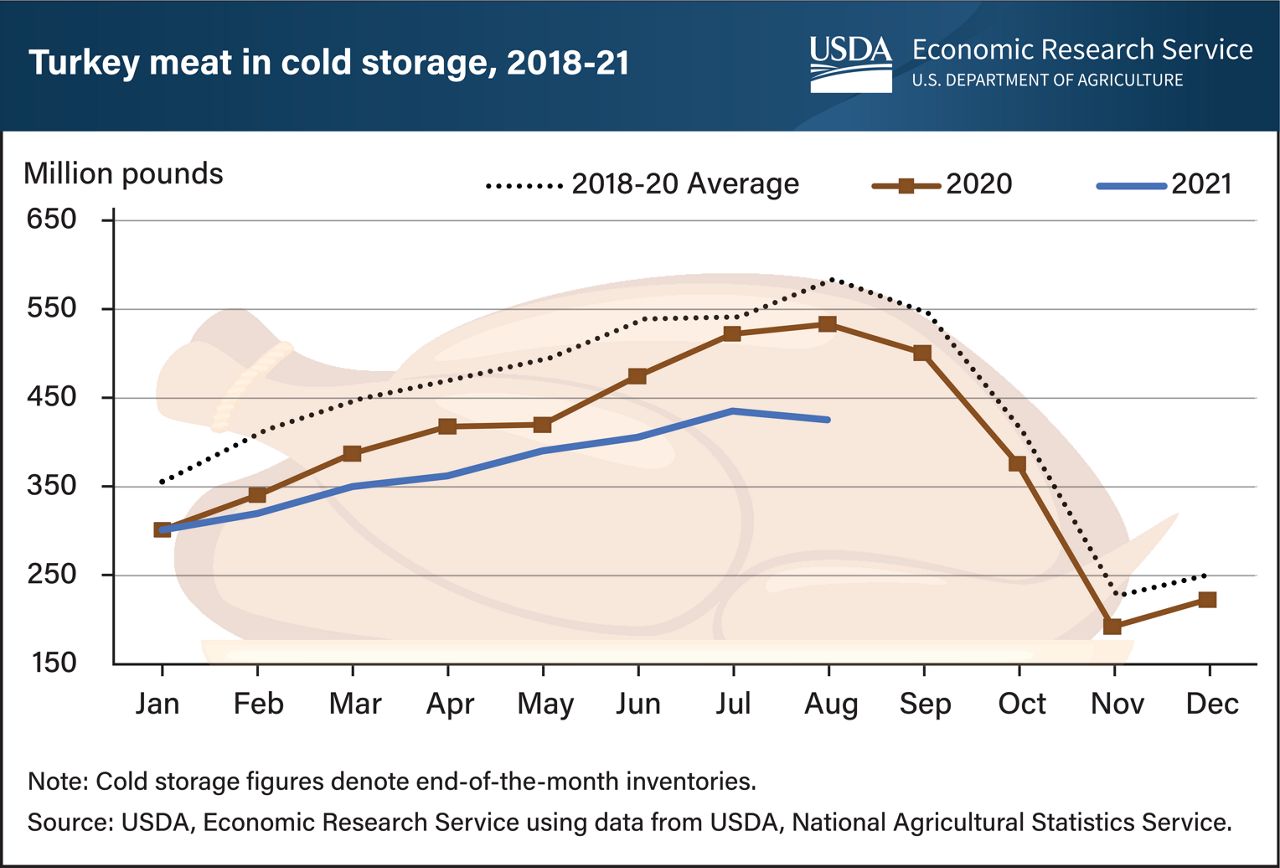ROUGEMONT, N.C. – Thanksgiving is right around the corner and that can only mean one thing: lots of turkey.
Frozen turkey inventories are 24% below their three-year average volumes and that’s partially because of the rising cost of turkey feed, according to the U.S. Department of Agriculture.
North Carolina ranks among the top turkey producing states in the country and 2021 was Bull City Farm’s most successful year. They pre-sold more turkeys this year than ever before but co-owner Samantha Gasson says they still faced some challenges.
“It is by far the biggest month, busiest month. Basically anybody who raises and sells turkeys that's sort of the thing,” Gasson said. “Oh you want me to speak to you now? You do know this is November right?”
Gasson will tell you that being a turkey farmer is not an easy job.
“It’s insane. It’s just hard. Unless you’ve done it, it’s just really hard to understand,” Gasson said.
This job is even more involved when you commit to growing pasture-raised birds.
“We put them in a nice, big pen so they can run around and chase things and we move them around every four to seven days. Every time you move this wire it takes about three hours,” Gasson said.
But Gasson believes this is one of the best ways to do this kind of work and says this has been one of their most successful years so far.
“We do turkey year-round so we always buy enough so that we can do it year round. Last year, we pre-sold, just for Thanksgiving, 111. This year we’re up to 125 or 126,” Gasson said.
But that’s not without some challenges, one being a chick supply issue. The turkeys also require a lot of food.
“They eat a lot so they are going through 150 pounds a day,” Gasson said. “That really cuts in because these guys eat a lot. They forage and they can get a lot from the bugs and everything but now that the bugs aren't really around very much, they get most of the nutrients from their feed and they eat a lot because they are big.”
For Gasson, most of the difference this year has been finding high quality feed that hasn’t gone up in price.
“Our feed costs all went up and they've gone up a lot. So it's not just like they've gone up $0.50 for 100 pounds or $0.50 for 50 pounds. They've gone up $3 or $4 for every 50 pounds,” Gasson said. "I think people have gotten very spoiled with really cheap meat but that cheap meat comes at a cost and that cost is the welfare of the animal.”
Despite all of this, Gasson loves what she does and says she’s already thinking about planning for Thanksgiving next year and they may try out a different breed of turkey so that their birds won’t be as big as they were this year.




